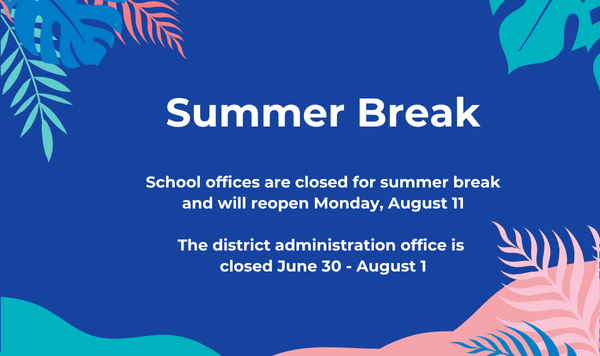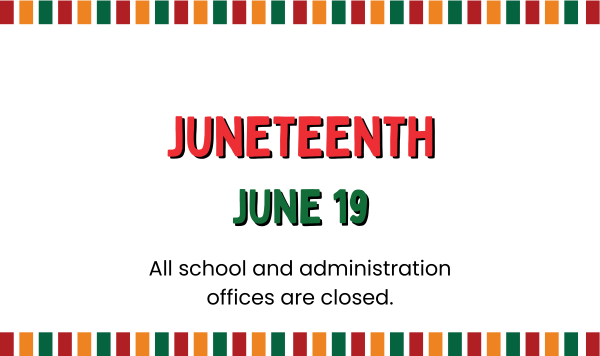Important News
Corvallis School District closed for summer break
Superintendent’s Budget Message
Shared with the Budget Committee during the May 14, 2020 meeting
Dear Budget Committee, Colleagues and Corvallis Community:
I submit for your consideration the proposed budget for the Corvallis School District for the fiscal year beginning July 1, 2020 and ending June 30, 2021. I am honored to serve you and the community of Corvallis in my fifth year as superintendent and I believe this budget reflects the vision and goals of the district and directs resources where needed most to create new possibilities, with a focus on equity, for our students and community.
Many of the decisions we make in developing a budget are impacted by external factors beyond our control. This is true in ordinary times and will be even more true this year. This budget proposal assumes that education funding in Oregon will remain at levels originally adopted by the state legislature for the 2019‐21 biennium, and that the Student Success Act, funded through a new corporate activity tax, will be fully implemented. However, we know that the economic impact of the COVID‐19 pandemic will likely reduce projected revenue in the final year of the biennium and that the State School Fund could be disproportionately impacted for the 2020‐21 fiscal year. We also believe that future state revenue forecasts will likely show a significant reduction in corporate activity taxes, which will translate into a significant reduction in funds available to implement the Student Success Act.
While there is a lot we do not know yet about the year ahead, what I do know is that our dedicated staff are here for our students and families; working hard and finding solutions for the many challenges we face now and into the future. As we anticipate revenue shortfalls, we are working to develop contingency plans that can be implemented in the event of a substantial loss of funding. Combined with federal stimulus funds and the potential deployment of state and district reserves, these plans will help us respond with flexibility to move quickly as the economic story in Oregon continues to unfold.
STRATEGIC PLANNING AND BUDGET DEVELOPMENT
Regardless of the many challenges we face, we are committed to developing a budget that will best serve the students of our community. The first step in our budgeting process is to ensure that our financial plan is rooted in the priorities of the district: EVERY student graduates, EVERY student shows growth, and CLOSE the opportunity gap. Through a continual emphasis on these three priorities, our students are succeeding at levels that continue to outpace the state average. The district’s graduation rate for 2018‐19 was 89%, an increase of 2% from the previous year, and 7% higher than the district’s graduation rate three years ago in 2015‐16.
While we have much reason to celebrate this success, we must continue to focus on how to close the opportunity gap for students navigating poverty, students with disabilities,
emerging bilingual students, and students of color. The district’s Strategic Financial Plan served as the starting point for the development of this budget proposal, which includes
actions to implement the instructional priorities described in the plan. Using a collaborative process, our intent is to establish and nurture a district‐wide culture that prioritizes the smart and strategic use of resources in order to improve outcomes for all students. The Strategic Financial Plan will continue to be an important document used in our decision‐
making processes.
SUMMARY OF PROPOSED BUDGET
The annual proposed budget is the district’s plan for the upcoming school year. At the same time, the annual budget is part of long‐term investments in the educational experiences our students receive. It is important to think about our budget as a year in time, and a thirteenth of the educational opportunities we provide our students.
This budget proposal includes a total investment of $351.9 million represented by 11 separate funds, the largest of which are the General Fund and Capital Projects Fund. The total budget for all funds is a $2.0 million or 0.6% increase over the 2019‐20 budget. This budget proposal includes ongoing allocations for strategic investments to support the district’s Strategic Financial Plan while recognizing the financial challenges that we face with adequately funding all priorities.
GENERAL FUND BUDGET
The General Fund represents 28% of the 2020‐21 proposed budget for all funds and accounts for most operating activities of the district except those activities required to be accounted for in another fund. General Fund revenues come from two main sources – local property taxes and the State School Fund (primarily funded through state income tax). The 2020‐21 proposed budget is based on a $9.0 billion State School Fund with 49% allocated in 2019‐20 (the first year of the biennium) and 51% allocated in 2020‐21.
Budgeted General Fund current resources total $88.3 million, an increase of $8.4 million or 10.5% from 2019‐20. The majority of the increase in General Fund resources is due to the new Student Investment Account made available through the Student Success Act. Budgeted General Fund current requirements total $89.9 million, an increase of $2.5 million or 2.9% from 2019‐20. Salaries and benefits comprise the majority of expenses at $70.4 million or 78% of all current requirements.
School board policy, DA: Fiscal Policies, provides guidance regarding the financial objectives for managing General Fund reserves. Those objectives include establishing a sustainable level of programs, protecting the district from unnecessary borrowing to meet cash flow needs, providing prudent reserves to meet unexpected emergencies, protecting against catastrophic events, and meeting the uncertainties of state and federal funding. As outlined in the policy, all General Fund contingency and reserve accounts are budgeted to result in the levels required. Assuming underspending of 1.5%, a small projected operating deficit of $0.3 million will be offset by surplus reserves.
CAPITAL PROJECTS FUND BUDGET
The Capital Projects Fund represents 54% of the 2020‐21 proposed budget for all funds and accounts for activities related to the acquisition, construction and equipping of school facilities. Capital Projects Fund revenues come from three main sources ‐ proceeds from the sale of bonds, bond premium, and interest earnings.
Corvallis voters approved the issuance of $199.9 million in general obligation bonds on May 15, 2018 to finance capital improvements at all schools. The successful passage of the 2018 bond is helping us make sound investments, solve long‐term challenges, and transform an aging infrastructure to offer more innovative and equitable opportunities for all students. Bond proceeds are providing funds to install new safety and security equipment, replace portables with permanent classroom space, replace two elementary schools, renovate and repair school buildings, and expand educational spaces for career and technical education programs.
The 2020‐21 proposed budget for the Capital Projects Fund totals $190.9 million and includes funding for several projects that are underway including the replacement of Lincoln Elementary and Hoover Elementary, and renovations at Garfield Elementary and Cheldelin Middle School.
LOOKING FORWARD
The district’s long‐term projections are designed to provide the fullest picture of the district’s financial future so that decision making today can support high quality and innovative educational programs tomorrow. Economic factors are more uncertain and complex than ever before. The impacts of the COVID‐19 pandemic are only just beginning to be seen and the long‐term effects remain a mystery to us all. These are “moving targets” and substantial challenges as we are making decisions for future years without currently knowing all the answers.
We are charting a new course in our district and flexibility will be key as we move forward. We are committed to doing everything in our power to help all kids successfully continue their educational journey with us. We know that reserves alone will not be enough to cover anticipated revenue shortfalls and we recognize that we will have to be creative in shifting the allocation of resources and spending funds differently in order to continue investments in programs that support our priorities.
CONCLUSION
This proposal represents the work of the entire team of building principals and department and program managers who have studied and implemented the process of strategic budgeting and labored as a team to propose a budget based on our district’s goals and instructional priorities. We recognize the importance of presenting a quality, easy‐to‐understand budget to the community. In recognition of our commitment to communicate the district’s goals and objectives clearly and illustrate our commitment to adhering to nationally recognized budget presentation standards, the district has once again received the Association of School Business Officials International Meritorious Budget Award. This award reflects our
district’s dedication to sound fiscal management and budgetary policies.
In closing, I want to thank our staff, students, parents, and community for their ongoing support and patience during this challenging time in our district, state and nation. This year will mark a chapter in our lives that includes a roller coaster of emotions and experiences, but we are in this together and doing what is best for all students will continue to inform our decision‐making as we navigate this new normal. I would also like to express my appreciation to the members of the budget committee for their service, support, thoughtful analysis, dialogue and consideration of this proposed budget.
Respectfully submitted,
Ryan Noss
Superintendent


